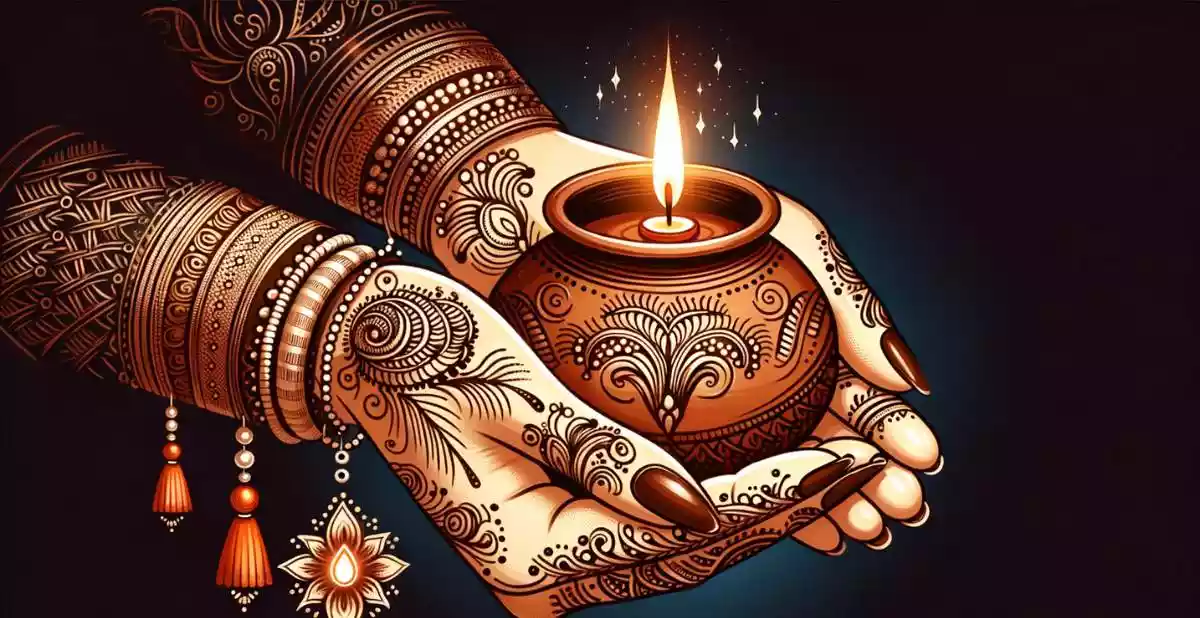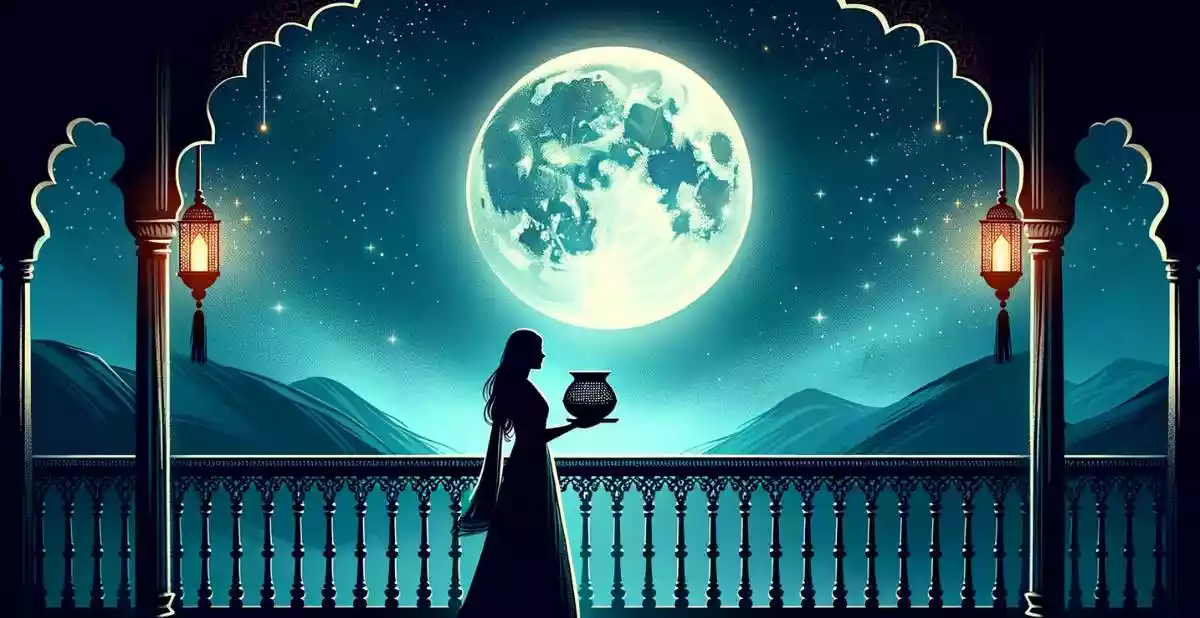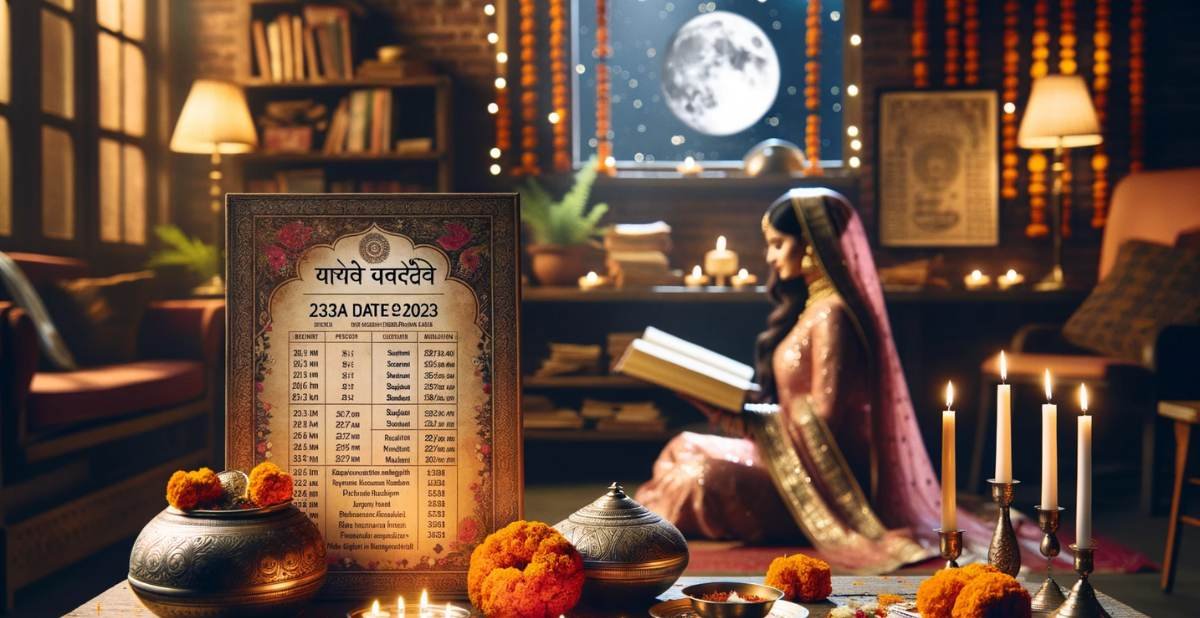The Essence of Karwa Chauth 2023: A Time-Honored Tradition
Karwa Chauth is a time-honored tradition celebrated by married Hindu women primarily in India, marking a day of love, care, and unyielding prayers for the well-being and longevity of their husbands. This festival is not only about fasting but also about celebrating the marital bond.
karwa chauth
The festival entails a day-long fast from sunrise to moonrise, carried out by married women for the safety and longevity of their husbands.
The name Karwa Chauth derives from the words ‘pot’ and ‘fourth,’ reflecting the festival’s occurrence on the fourth day following the full moon in the Hindu month of Kartika.
Historically, Karwa Chauth might have roots in prayers for a fruitful harvest in India’s wheat-growing regions.

The observance of Karwa Chauth involves certain rituals and traditions. The fast begins with a pre-dawn meal known as ‘Sargi,’ followed by a day-long fast, which concludes upon the moon’s sighting in the evening.
Karwa Chauth’s celebration is an emblem of the love, trust, and care inherent in marital relationships, with its rituals and associated tales elucidating the profound significance and reverence of the marital bond.
Over time, while retaining its traditional essence, the festival continues to adapt, reflecting the enduring values of love, trust, and care within marital and prospective marital relationships.
Karwa Chauth Vrat Katha
One popular narrative associated with the Karwa Chauth Vrat Katha is the tale of Veeravati. According to this story, Veeravati, who had seven doting brothers, decided to observe a strict fast for her husband.
However, her brothers, unable to bear her distress, tricked her into breaking the fast before moonrise, which consequently led to her husband’s death.
Realizing the trickery, Veeravati prayed fervently to the gods, who moved by her devotion, resurrected her husband.

History of Karwa Chauth
The history of Karwa Chauth traces back to ancient times, with its roots deeply embedded in both agricultural practices and familial ties. Here’s a concise explanation of the history of Karwa Chauth.

Origins:
The name “Karwa Chauth” derives from the Hindi words ‘Karwa’ meaning ‘pot’ and ‘Chauth’ meaning ‘fourth’, indicating the festival’s occurrence on the fourth day following a full moon in the Hindu month of Kartika.
Initially, the festival might have been associated with the harvest season, specifically in the wheat-eating northwestern regions of India. Large earthen pots (Karwas) used for storing wheat were symbolic, and the fast might have commenced as a prayer for a good harvest.
Historical Significance:
Over time, the festival evolved to emphasize the well-being of husbands, especially those who went to distant lands, possibly for war or trade. Women began fasting and praying for their husbands’ safe return and longevity.
The festival also came to commemorate the bond of sisterhood or god-friends, which later transitioned into a ceremony where married women fast for the well-being of their husbands.
Mythological Ties:
Numerous legends are associated with Karwa Chauth. One popular tale is of Queen Veeravati, who was tricked by her brothers into breaking her fast early, which led to her husband’s demise. However, upon her earnest prayers, a goddess advised her to re-observe the fast, eventually restoring her husband’s life.
Another tale is of Satyavan and Savitri, where Savitri’s devout fast and prayers to Yama, the God of death, saved her husband Satyavan’s life.
Evolution Over Time:
Karwa Chauth began being widely practised across Northern India in the 19th century, emphasizing the marital bond and the well-being of husbands.
The festival of Karwa Chauth, with its historical, agricultural, and mythological roots, highlights the profound marital and communal bonds within Indian society, continuing to be a cherished tradition.

Karwa Chauth Thali
The thali is not just a collection of items; it’s a vessel of love, blessings, and prayers, each component aiding in creating a spiritually charged environment, making the Karwa Chauth ritual a deeply meaningful and cherished part of the marital journey.
- Karwa (Clay Pot): A small clay pot representing the moon, used for viewing the moon after the fast. It’s filled with water, and adorned with vermillion and rice, symbolizing life, often passed down through generations.
- Diya (Oil Lamp): Illuminates the thali, representing divine light, essential in Hindu rituals.
- Mehendi Cone: Used for applying intricate henna designs on the hands and feet of married women, symbolizing love and affection.
- Channi (Sieve): Used to view the moon, then passed over the husband’s face, after which the wife sees her husband through the same sieve.
- Mauli (Sacred Thread): Tied around the Karwa to protect its sanctity, symbolizing the bond between husband and wife.
- Red Cloth: Covers the thali and other items, signifying the ritual’s sacredness and the love between the couple.
- Roli and Akshat: Used for tilak application at the puja’s onset, where Roli symbolizes the blood binding the couple, and Akshat represents abundance.
- Indian Sweets: Offered to deities during the puja and later consumed to break the fast.
- Incense Sticks and Camphor: Used to purify the puja space and create a spiritually charged atmosphere.
- Coconut: Often wrapped in a red cloth, representing Lord Ganesha, included in the thali for blessings.

karwa chauth Date 2023
The auspicious festival of Karwa Chauth is observed on a specific day following the lunar calendar, and it encompasses various rituals carried out at specific times deemed auspicious. In 2023, Karwa Chauth will be celebrated on November 1. Here’s a breakdown of the auspicious timings for Karwa Chauth Puja in 2023:
| Event | Timing | Source |
| Karwa Chauth Date | November 1, 2023 | 1 |
| Karwa Chauth Puja Muhurat | 05:01 PM to 06:18 PM | 1 |
| 06:18 PM to 07:38 PM | 2 | |
| 05:13 PM to 06:28 PM | 3 | |
| 05:36 PM to 06:54 PM | 4 | |
| Karwa Chauth Upavasa (Fasting) Time | 07:36 AM to 08:12 PM | 2 |
| 05:48 AM to 08:03 PM | 3 | |
| 06:33 AM to 08:15 PM | 5 | |
| Moonrise Time | 08:15 PM | 4 |
| 08:15 PM | 5 |
The variance in timing across different sources underscores the importance of consulting local or regional panchang (Hindu calendar) or local religious authorities to determine the most accurate and relevant timing for observing the rituals of Karwa Chauth.

Fasting during Karwa Chauth is a significant aspect of the festival, embodying the love, care, and concern a wife has for her husband’s well-being. Here’s a structured overview of the rules about fasting during Karwa Chauth, as sourced from multiple outlets:
Pre-Fasting Preparations:
- Early Morning Rituals: The fast begins with early morning pre-sunrise rituals. It’s customary to bathe and don fresh attire before the sun rises. A Sargi, a pre-dawn meal prepared by the mother-in-law, is consumed before commencing the fast.
Fasting Rules:
- Nirjala Fast: Karwa Chauth fast is a ‘Nirjala’ fast, where women abstain from both food and water from sunrise to moonrise
- Solah Shringar: On this special day, women adorn themselves with 16 types of adornments, known as Solah Shringar
Dos:
- Adhering to the traditional rituals and dressing up in traditional attire is encouraged.
- Engagement in prayers and community celebrations is a significant part of the observance.
Don’ts:
- Avoiding negative thoughts and maintaining a positive and cheerful demeanor throughout the day is often advised.
Breaking the Fast:
- The fast is broken post-sunset after the sighting of the moon. Women break their fast after viewing the moon through a sieve, and thereafter, they can consume water and food.
First-Time Fasters:
- For women observing the fast for the first time, it’s a special occasion often celebrated with additional rituals and adornments.
Karwa Chauth’s fasting rituals are steeped in tradition and cultural significance, embodying the deep bond between a married couple. The adherence to these fasting rules, despite the stringent nature of the fast, reflects the enduring love, respect, and concern for the spouse’s well-being and longevity.